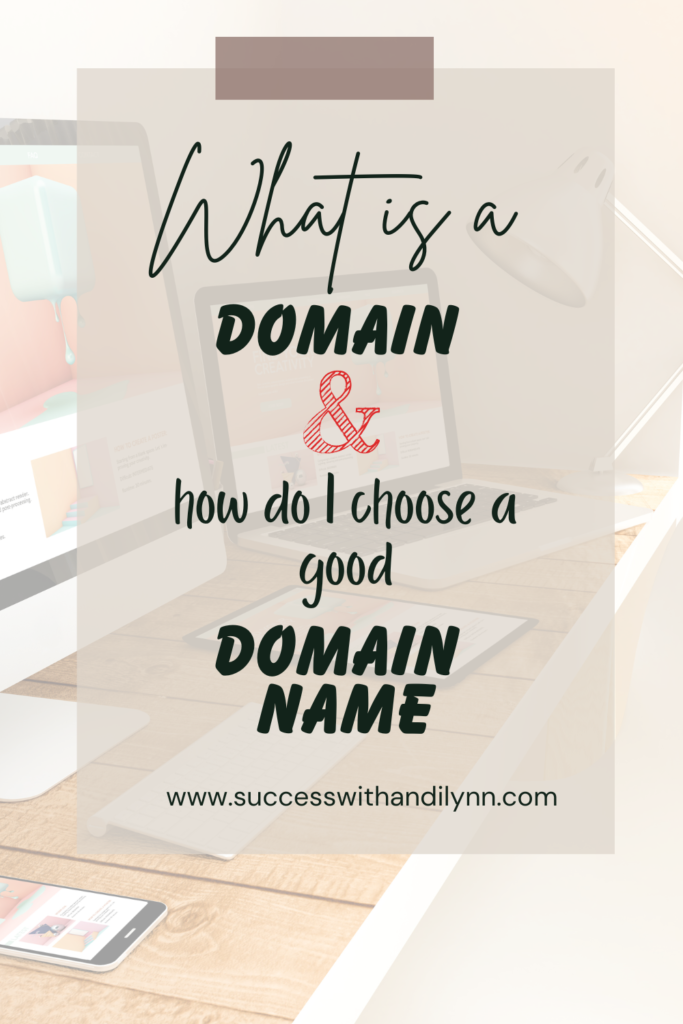In this Beginner’s Guide to Understanding and Utilizing Domains, I will discuss reasons you need a domain for your business and how to utilize a domain properly.
D0mains play a crucial role in defining online presence and identity. Whether you’re an individual, a business, or an organization, understanding what a domain is and how to use it can significantly enhance your digital footprint.
In this blog post, we’ll explore the concept of domains, how to use them with or without creating an actual website, where to purchase them, and the best practices for choosing a domain name.

So, What is a Domain?
A domain is essentially a human-readable address that points to a specific location on the internet. It’s a user-friendly way to access websites, servers, or any online resource.
In technical terms, a domain is a part of a URL (Uniform Resource Locator) and consists of two main components: the actual name (like www.example.com) and the extension or top-level domain (TLD), such as .com, .org, or .net.
Using a Domain with a Website:
1. Establishing an Online Presence:
Purchasing a domain and creating a website is the most common use. This combination allows you to have a professional and easily accessible online presence.
2. Branding and Identity:
A domain is an integral part of your brand identity. Choose a domain name that reflects your brand, making it memorable and easy to spell.
3. E-commerce and Online Stores:
If you’re involved in online business, a domain is essential for establishing trust and credibility among potential customers.
Using a Domain Without a Website:
1. Custom Email Addresses:
A domain can be used for professional email addresses, even if you don’t have a website. This adds a level of professionalism to your communications.
2. Redirects and Forwarding:
You can use a domain to redirect users to other online profiles, such as a social media page or a blog hosted on another platform.
3. Personalized URL Shorteners:
Create branded, shortened URLs for links you share, enhancing your online presence and tracking link engagement.
Where to Purchase a Domain:
1. GoDaddy (www.godaddy.com):
One of the largest domain registrars, offering a wide range of domain extensions and additional services.
2. Namecheap (www.namecheap.com):
Known for competitive pricing and a user-friendly interface, Namecheap is a popular choice for domain registration.
3. Bluehost (www.bluehost.com):
A hosting provider that also offers domain registration services with a variety of features.
4. Google Domains (domains.google):
Google’s domain registration service with a clean interface and transparent pricing.
5. Hover (www.hover.com):
A user-friendly domain registrar known for its straightforward approach and excellent customer support.
An e-commerce website builder that allows you to purchase and domain with your storefront.
Picking the Perfect Domain Name:
1. Relevance and Clarity:
Choose a domain name that reflects your content, business, or personal brand clearly.
2. Short and Memorable:
Keep it concise and easy to remember to make it accessible for your audience.
3. Avoid Hyphens and Numbers:
Hyphens and numbers can create confusion and are often harder to remember.
4. Consider the TLD:
Depending on your purpose, select an appropriate top-level domain (.com for commercial, .org for organizations, etc.).
5. Check Availability:
Ensure the domain name you want is available and not already in use by another entity.
Understanding and utilizing domains can significantly impact your online presence, whether or not you choose to create a website. By carefully selecting a domain name that aligns with your goals and using reputable registrars, you can establish a strong digital identity on the internet.
So, whether you’re launching a business, creating a personal brand, or just securing a unique online space, domains are the key to unlocking the vast potential of the world wide web.
